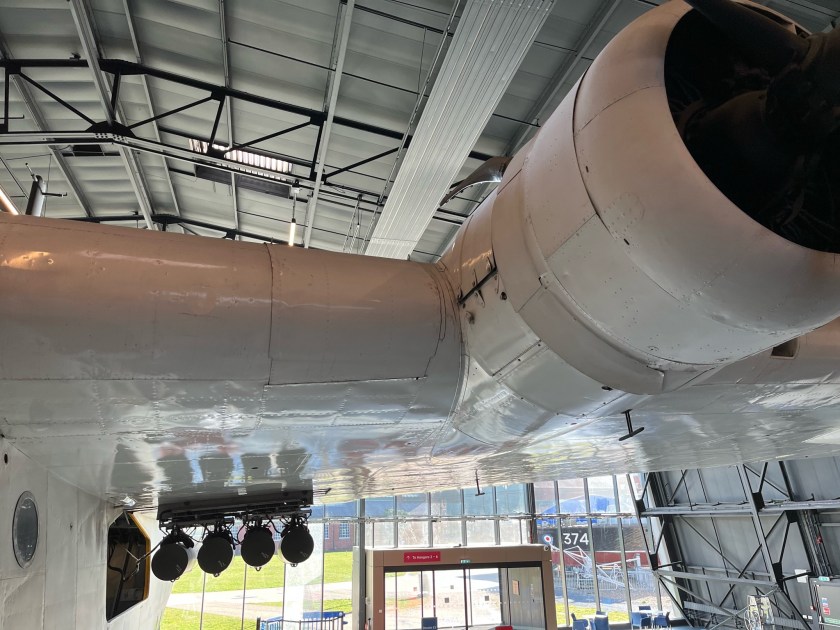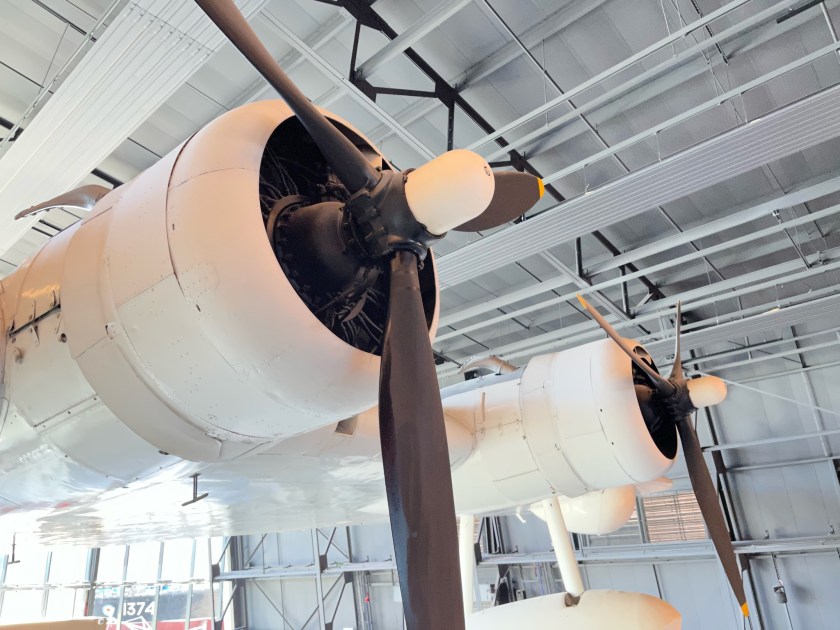This Sunderland was on display at RAF London.
The Short S.25 Sunderland was a British flying boat patrol bomber, developed and constructed by Short Brothers for the Royal Air Force (RAF).
It entered service in June 1938 and was the first British flying boat to have power-operated gun turrets as part of its defensive armament. This strong protective armament resulted in the Germans giving it the nickname ‘Flying Porcupine’.
I enjoyed walking through the Sunderland and it is an impressive plane.
By the start of World War Two in September 1939 three squadrons had been equipped with the Sunderlands. Seven hundred and forty-nine Sunderlands were built, and they served throughout the war. The final Coastal Command Sunderland operational mission was in June 1945 over four weeks after the German surrender. Long-range Sunderland operations also took place overseas from bases in Africa and the Far East.
Post-war the type took part in the Berlin Airlift carrying 4920 tonnes (4847 tons) of freight. During the Korean War Sunderlands based in Japan undertook nearly 900 operational sorties totally over 13350 hours of flying. The Sunderland finally retired from RAF service in 1959 when the last aircraft were scrapped at RAF Seletar, Singapore.
The Sunderland’s design was so good that it remained in front line service for over twenty years. It was also the last flying-boat operated by the Royal Air Force.
Developed in parallel with the civilian S.23 Empire flying boat, the flagship of Imperial Airways, the Sunderland was developed specifically to conform to the requirements of British Air Ministry Specification R.2/33 for a long-range patrol/reconnaissance flying boat to serve with the Royal Air Force (RAF).
There is also a Short Sunderland at Duxford.





